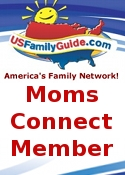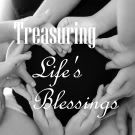When it comes to the world of homeschool science curriculum, we are no strangers to
Apologia Educational Ministries. Being that we are in our 9th year of homeschooling, we have used many of their homeschool science resources and have loved each subject we've studied. We heard almost a year ago, that author Jeannie Fulbright was coming up with yet a new volume to add to their science line,
Exploring Creation with Chemistry and Physics that was just released this past September. We had the privilege of being amongst the first to receive this brand new curriculum to review.

We received both the
textbook and
notebooking journal and were pleased as usual with the quality and information presented. The textbook is a hardbound book and the notebooking journal is a spiral bound consumable. All the curriculum in Apologia's science line are presented with a Biblical worldview which is important to me. There are 14 lessons broken down into 28 weeks. In the beginning of the notebooking journal, there is a schedule broken down exactly how to cover the entire text, when to read certain pages and do the activities in the corresponding journal. Personally, I love any curriculum that breaks down into a well planned schedule for me so all I have to do is implement the lesson plans, perfect for a busy mom!
The topics covered in this curriculum are:
-Chemistry and Physics Matter
-Moving Matter
-Building Blocks of Creation
-Compound Chemistry
-Multitude of Mixtures
-Mechanics in Motion
-Dynamics of Motion
-Work in the World
-Sounds of Energy
-Light of the World
-Thermal Energy
-Electrifying Our World
-Mysterious Magnetism
-Simple Machines
We have the unique opportunity in that our homeschool co-op is offering this course this year as one of their science classes so I have 2 children taking it. How we use this is my kids take a one hour class every Monday. They go over the material they have read the previous week from the textbook and review any homework that was assigned in the notebooking journal. After that, they usually complete projects or experiments that are listed in the book under the "try this" scattered throughout the lessons.
Lava lamps they made in Chapter 1
After Monday, we spend the next 4 days reading the text for the week, completing different pages in the notebooking journal such vocabulary, crossword puzzles, copywork (printing or cursive writing of scripture) or lapbook style mini-books. We've also done some additional experiments my children didn't cover in their co-op class.
This course is already chock full of information and activities but Apologia also included a website address that contains even more extras if you are looking to supplement this course with even more activities. (this is only accessible to those who have the textbook as it is password protected). On the website, the "extras" are broken down by chapter making it easy to find what you want. Some of the things included are extra experiments, videos, detailed explanations and interactive presentations.
Studying salt crystals
You can do this course with just the textbook alone if you didn't have the funds to get each child a notebooking journal (though I highly recommend the journals!) The textbook is written in an easy to understand, conversational tone and makes you feel like the author herself is sitting with you conversing. She takes these challenging topics and presents them in a way for everyone to grasp and understand. There are questions throughout the text that provoke in-depth conversation and make the students really think about the how & why of what they are learning. Like what a polymer is and how it can be reformed into other polymers (where then they made their own bouncy ball). Or how chemical and physical reactions work (they combined mentos & diet coke. . .outside!!!)
I know it can sound overwhelming to do experiments at home but most of the experiments we've done (and the few I've looked ahead at) contain simple components many of which you may already have around the house or other inexpensive ingredients to buy. In the back of the book, there is a list of needed supplies listed by chapter making it easy to know ahead of time what you need to have on hand.
This was from chapter 4 the class did as a group
The target age for this curriculum is K-6th grade which again, for a busy family that schools many ages, this can be a huge plus. I appreciate curriculum that allows me to include several of my children together. Not only does it save me time, but my kids enjoy working together on projects and experiments. Since my kids are older that are using this, they sat down together and would read the book aloud then do the book work individually.
While we used the regular notebooking journal this time, Apologia also has a
Junior notebooking journal geared for the beginning writer and younger student. They accidently sent us a copy so I had the privilege of looking this over. I admit I never used a junior notebook before but I was quite impressed with it and plan to use it in the future when my little ones reach that age.
Just as we have been with all the Apologia sciences we've used in the past, we were once again pleased with the quality and content of this curriculum and would highly suggest it to any family looking for an in-depth but easy to implement science curriculum. The only minor change I would suggest would be to make the notebooking journal have perforated pages making it easier to tear out for activities as well as ease of use to put into end of year portfolios.










































